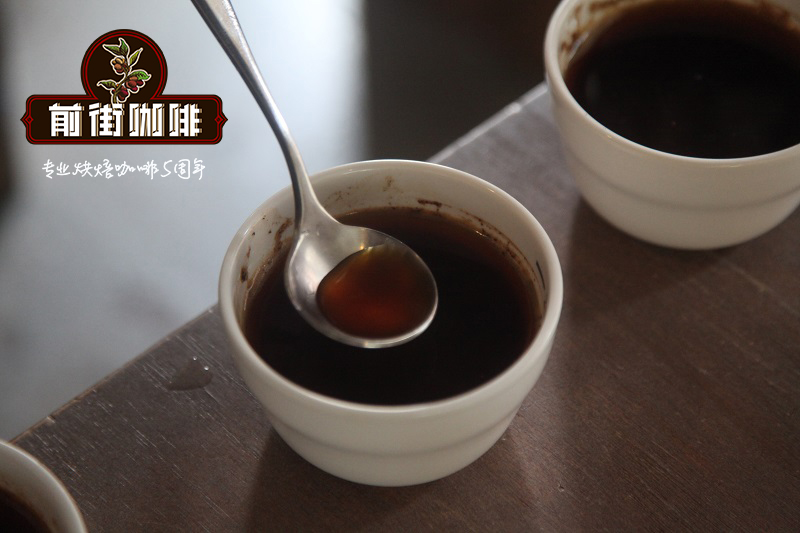What kind of coffee do you have in India? How to drink Indian Malaba coffee by hand?

Professional coffee knowledge exchange more coffee bean information please follow the coffee workshop (Wechat official account cafe_style)
It is only 1600 years since coffee became the first drink in the world, so the recorded history of coffee is only 400 years similar to that of Taiwan. It is generally recognized that Africa is the home of coffee, originated in Ethiopia and spread around the world from the port of Mocha in Yemen. However, in order to prevent coffee from being grown in other countries, all coffee beans can only be exported after shelling. But Baimi was the first to spread coffee from Muslim areas of Yemen around 1600 (in the 17th century), when BaBa Budan, a pilgrimage to Mecca, hid seven germinating coffee beans in his belly and smuggled them back to his home in southwestern India, thus opening the history of the spread of coffee in the world. And this southwestern India is now the Malaba region (Indian Malaba).
Indian Malaba coffee, or Monsooned Malaba Coffee, has always been popular among Europeans, and this kind of coffee is a new flavor created inadvertently. In the 17th and 18th centuries, India shipped coffee beans to Europe by sailboat, which took six months. The raw beans were placed on the bottom of the barn and absorbed the moisture and salty taste of the sea. The raw beans arrived in Europe and had deteriorated. The color changed from dark green to the yellowish brown of rice. The acidity of the coffee almost disappeared, but it unexpectedly developed a strong nutty and shell flavor. It tasted full, with a bit of black rice tea flavor. Nordic people like this kind of golden alternative coffee very much. In 1869, the opening of the Suez Canal and the advent of steamships shortened the sailing time between India and Europe, but customers began to complain that Indian coffee was "stale", losing its charming yellowish and nutty flavor, and orders plummeted. Indian exporters began to study the solution. The original coffee shipped to Europe took more than half of the time to become "transformed" and lost its original flavor, so exporters thought of the salty and wet environment blown by the Indian ocean along the coast of Malaba in southwestern India every year from late May to September. After several experiments, it was made similar to the old golden coffee without acid, so it was named "monsoon coffee", commonly known as wind-stained coffee.
Malaba coffee needs to be made with sun beans, and the wind-stained factory faces to the west in order to catch the salty and wet monsoon blowing from the southwest. Coffee beans are laid flat in the wind-soaked field, the windows are all open, and the wind stains can be put into the bag to a certain extent, but the coffee beans cannot be filled too full, and the coffee bags should not be piled too dense to avoid mildew, and it is time-consuming and labor-consuming to pour out coffee beans and replace sacks from time to time to avoid mildew. The weathering period is about 12 to 16 weeks, and after it is ripe, it has to be fumigated to drive out the weevil, and finally the beans are screened manually to pick out the failed beans that have not turned golden. After three to four months of wind stains, the volume of green coffee beans increased by one to two times, the weight and density decreased, the moisture content was about 13%, and the quality and quantity changed significantly.
Ps. In fact, after roasting Malaba coffee, it takes 3 days for the flavor of Malaba coffee to develop well-- taste it slowly in two days.
How should Indian Malaba coffee be roasted?
Because this coffee belongs to the general density of beans, Qianjie coffee is recommended to roast medium firepower to climb steadily, turn yellow point at about 4 minutes and 50 seconds, then reduce firepower to open the throttle and enter Mena reaction, when an explosion, open the throttle, maintain firepower, the temperature is about 184.4 ℃, 2 minutes and 30 seconds after an explosion.
Indian monsoon Malaba AA Indian Monsooned Malabar AA
■ countries: India
■ producing area: Malaba
■ altitude: 1000-1500 m
■ treatment: wind stain treatment
■ level: AA
■ variety: Arabica
■ flavor description: cream, wheat, drupe, black sugar, fat and fat
Qianjie coffee is recommended to brew Indian monsoon Malaba coffee by hand.
Degree of grinding: 4 (Fuji R440)
Water temperature: 83 °C
Kono filter cup, 17 grams of powder, water temperature 83 degrees, grinding 4, water powder ratio close to 1:13
Technique: steaming with 30 grams of water for 30 seconds
Segment: water injection to 120g cut off, slightly larger water injection to 221g
The total extraction time is 1:50-2 minutes.
Qianjie coffee: Guangzhou bakery, the store is small but a variety of beans, you can find a variety of unknown beans, but also provide online store services. Https://shop104210103.taobao.com
Important Notice :
前街咖啡 FrontStreet Coffee has moved to new addredd:
FrontStreet Coffee Address: 315,Donghua East Road,GuangZhou
Tel:020 38364473
- Prev

What are the characteristics of Indian style-stained coffee? Is the Indian Malaba coffee good?
Professional coffee knowledge exchange more coffee bean information Please follow the coffee workshop (Wechat official account cafe_style) in the early years, Indian coffee was transported by sea from the coast of Malaba to Europe, which often took about six months to arrive in Europe. In the long process of shipping, under the influence of sea breeze and monsoon, these coffee beans gradually develop their flavor and color.
- Next

What is Indian Malaba coffee? What is the way to handle Indian coffee? Malaba coffee
Professional coffee knowledge exchange more coffee bean information please follow the coffee workshop (Wechat official account cafe_style) India's wind-stained Malaba coffee, is one of the world's most famous boutique coffee beans, also known as monsoon coffee beans in Taiwan, named after its English name Monsoon (monsoon), his treatment is very complicated and strange, mainly through the earth.
Related
- Beginners will see the "Coffee pull flower" guide!
- What is the difference between ice blog purified milk and ordinary milk coffee?
- Why is the Philippines the largest producer of crops in Liberia?
- For coffee extraction, should the fine powder be retained?
- How does extracted espresso fill pressed powder? How much strength does it take to press the powder?
- How to make jasmine cold extract coffee? Is the jasmine + latte good?
- Will this little toy really make the coffee taste better? How does Lily Drip affect coffee extraction?
- Will the action of slapping the filter cup also affect coffee extraction?
- What's the difference between powder-to-water ratio and powder-to-liquid ratio?
- What is the Ethiopian local species? What does it have to do with Heirloom native species?

